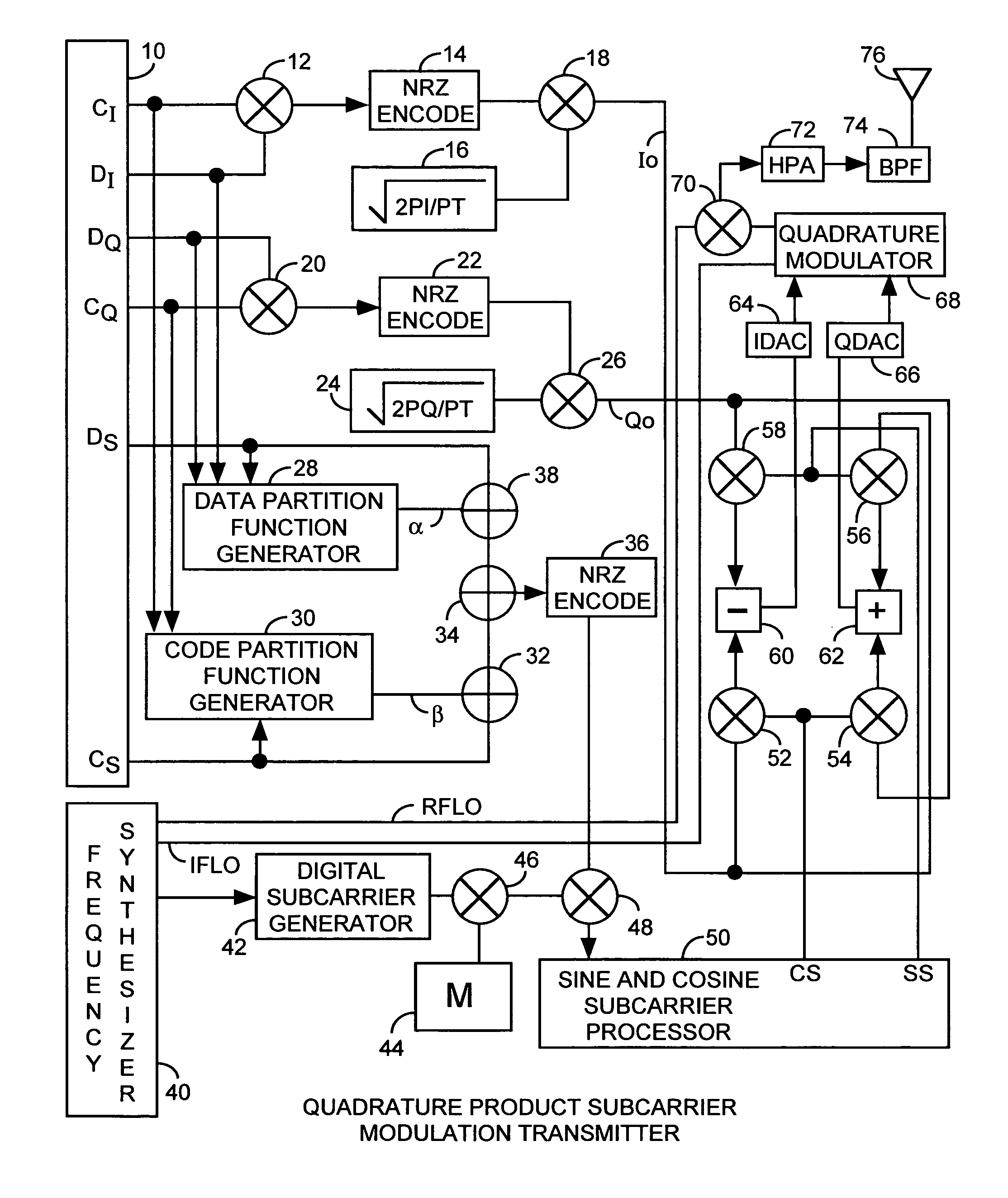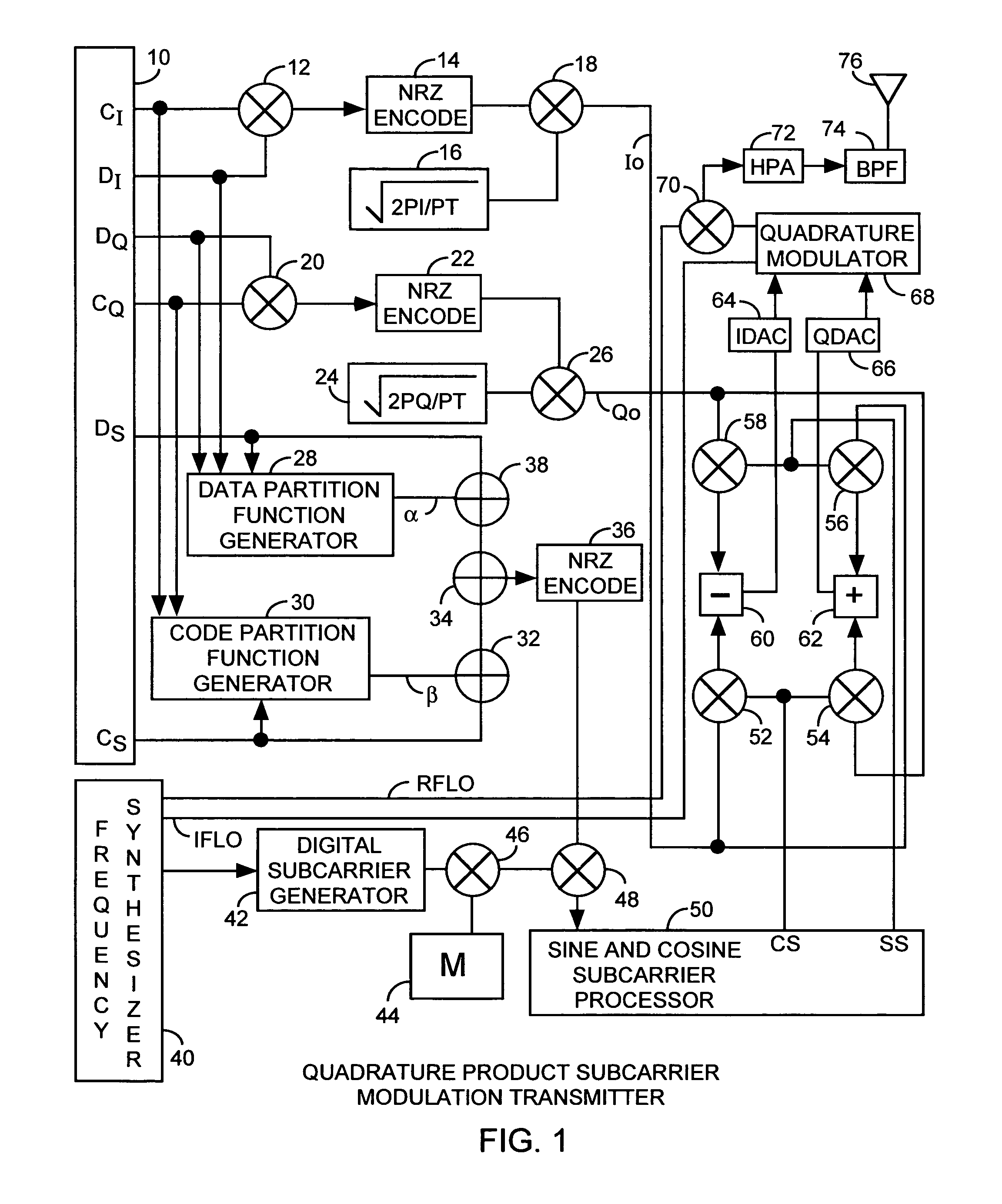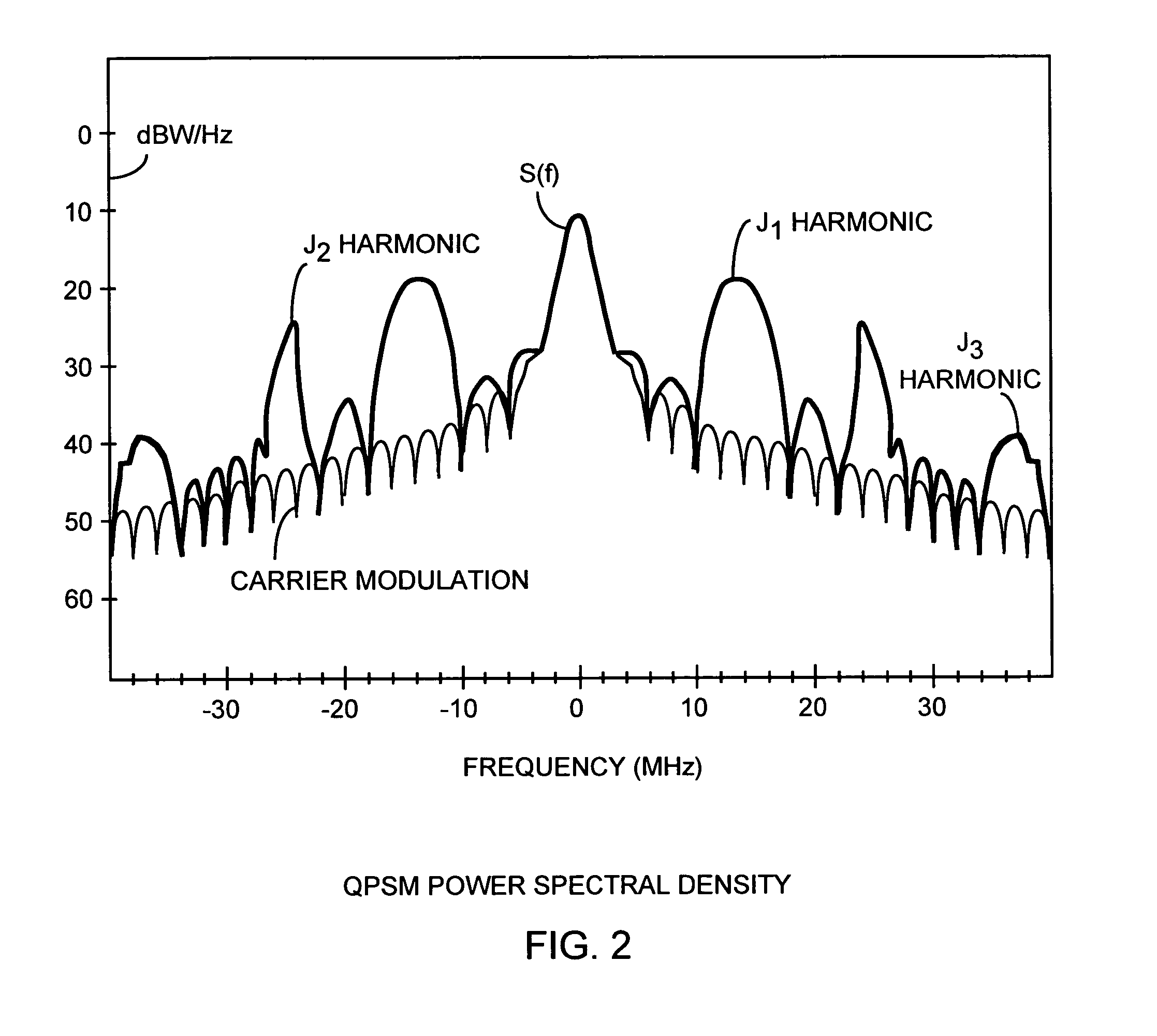Quadrature product subcarrier modulation system
a product subcarrier and product technology, applied in the field of quadrature product subcarrier modulation system and subcarrier modulation method, can solve the problems of undesirable non-constant envelope, general approach to applying subcarrier modulation method to quadrature-modulated communication system not previously developed, and distortion of existing signals, etc., to achieve the effect of enhancing existing two-code spread-spectrum system, high efficiency and high efficiency
- Summary
- Abstract
- Description
- Claims
- Application Information
AI Technical Summary
Benefits of technology
Problems solved by technology
Method used
Image
Examples
Embodiment Construction
[0037]A detailed description of the preferred embodiment is described with reference to the figures using reference designations as shown in the figures. Referring to FIG. 1, a quadrature product subcarrier modulation (QPSM) transmitter is used for transmitting in-phase code CI, inphase data DI, quadrature code CQ, quadrature data DQ, subcarrier code CS and subcarrier data DS signals originating from a code and data generator 10. The in-phase code and data signals are mixed by mixer 12, NRZ formatted by formatter 14, and power scaled by power factor 16 using mixer 18 providing the in-phase signal I0. The quadrature code and data signals are mixed by mixer 20, NRZ formatted by formatter 22, and power scaled by power factor 24 using mixer 26 providing a quadrature signal Q0. The mixers 12, 18, 20, 26, power factors 16 and 24, and formatters 14 and 22 may be integrated as a Q / I phase processor module.
[0038]In-phase and quadrature data signals DI and DQ are received by a data partition ...
PUM
 Login to View More
Login to View More Abstract
Description
Claims
Application Information
 Login to View More
Login to View More - R&D
- Intellectual Property
- Life Sciences
- Materials
- Tech Scout
- Unparalleled Data Quality
- Higher Quality Content
- 60% Fewer Hallucinations
Browse by: Latest US Patents, China's latest patents, Technical Efficacy Thesaurus, Application Domain, Technology Topic, Popular Technical Reports.
© 2025 PatSnap. All rights reserved.Legal|Privacy policy|Modern Slavery Act Transparency Statement|Sitemap|About US| Contact US: help@patsnap.com



